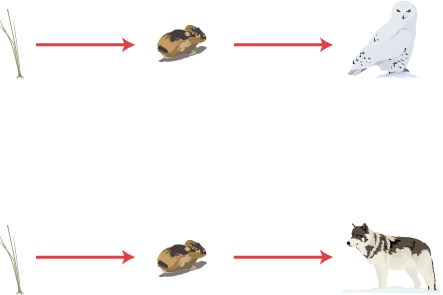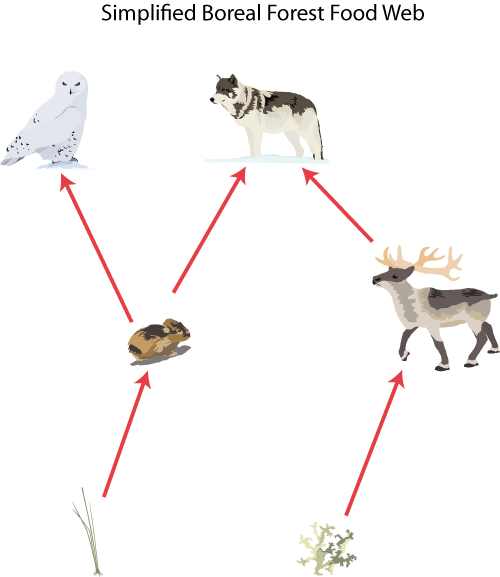2.2.4: Food Chains, Food Webs
Ecosystems have an hierarchy of feeding relationships (trophic levels) that determine the pathway of energy flow in the ecosystem. The energy flow in the ecosystem can be illustrated as a Food chain.

It is possible to construct food chains for an entire ecosystem, but this starts to create a problem.
The food chains below are form a European Oak Woodland. In fact they are based on real food chains at Wytham Wood in Oxford

In the four different food chains only ten species are listed and some of them are in more than one food chain. If we continued to list all the species in the wood and their interactions in every food chain the list would run for many pages.
Food chains only illustrate a direct feeding relationship between one organism and another in a single hierarchy. The reality though is very different. The diet of almost all consumers is not limited to a single food species. So a single species can appear in more than one food chain.

A further limitation of representing feeding relationships by food chains is when a species feeds at more than one trophic level. Voles are omnivores and as well as eating insects they also eat plants. We would then have to list all the food chains again that contained voles but moving them to the second trophic level rather than the third in a shorter food chain.
The reality is that there is a complex network of interrelated food chains which create a food web.
